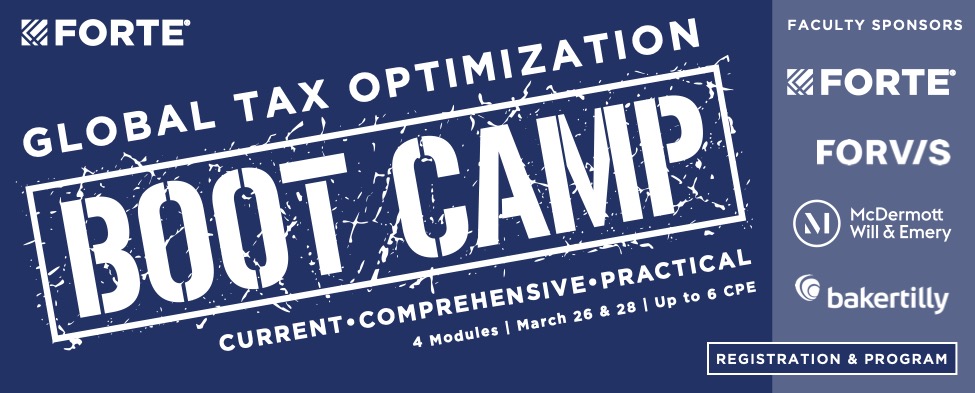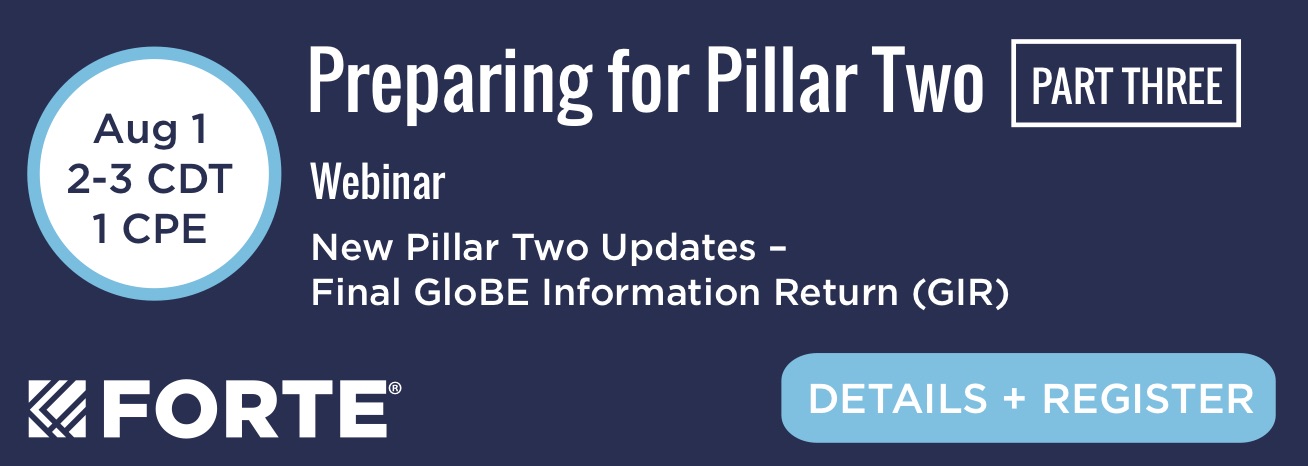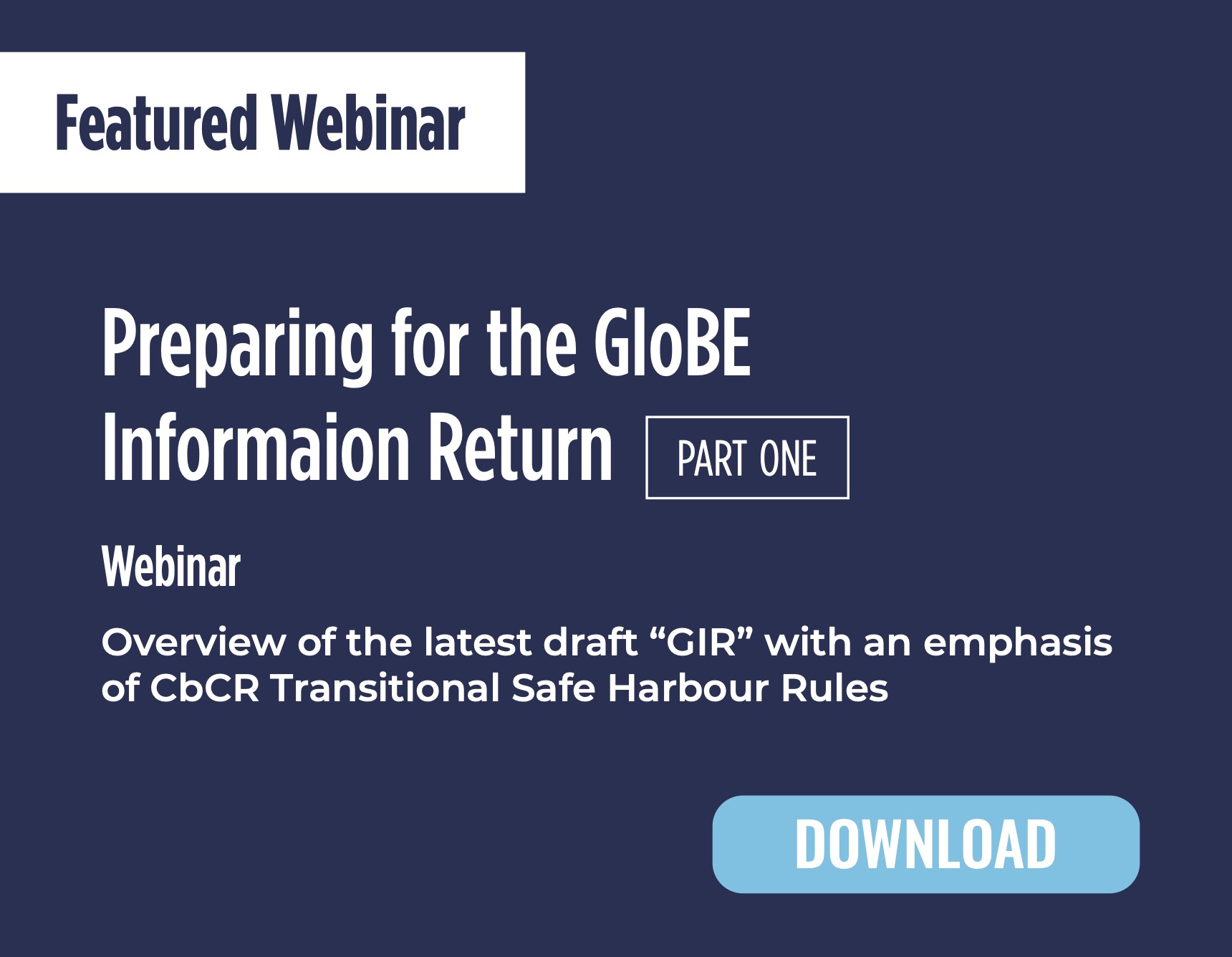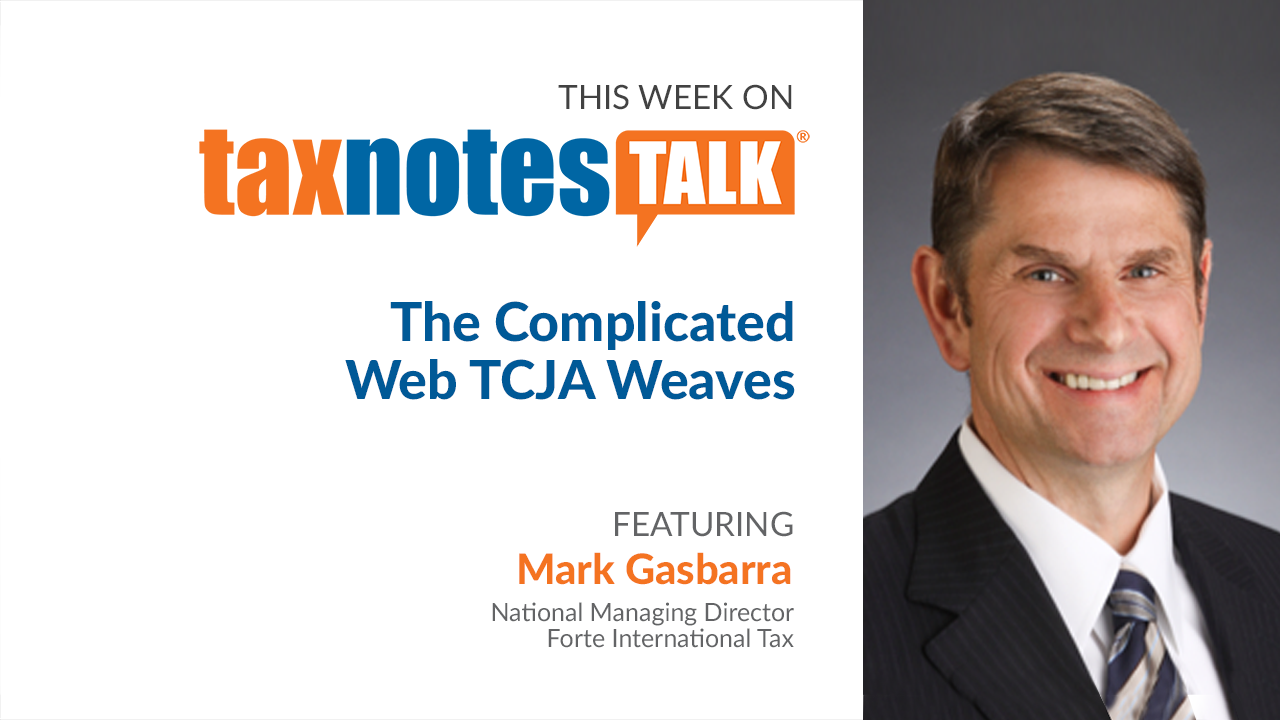Insights
BLOG

Pillar Two and IRS Notice 2023-80
May 2024
IRS Notice 2023-80 (“the Notice”) provides the U.S. government’s view on the foreign tax credit treatment of Pillar Two Top-up Taxes (which we have capitalized in this article for clarity) and makes a clear distinction between Qualified Domestic Minimum Top-up tax (“QDMTT”) and the extra jurisdictional Top-up Taxes imposed by an Income Inclusion Regime (“IIR”) and the backstop Undertaxed Profits Rule (“UTPR”). The Notice also raises the question of whether foreign losses taken into account in determining a jurisdictional effective tax rate should be treated as “foreign use” under the Dual Consolidated Loss (“DCL”) provisions. If so, the loss in question is ineligible for the DCL certification that there has been no “foreign use” of the loss.
We have surveyed what other commenters had to say about the Notice. There were in total 11 comment letters filed. View All Comments here: https://www.regulations.gov/docket/IRS-2023-0060/comments
There is an important interplay between Pillar Two Top-up Taxes and the U.S. international tax regime – specifically the proposed noncreditability of so-called “Final Top-up Taxes” (which we have also capitalized for clarity). An important consideration when coordinating these rules is the potential for computational circularity. Computational circularity is a potential issue because the allowance of a foreign tax credit impacts the U.S. tax cost of a GILTI inclusion, and the net GILTI tax cost is a Covered Tax for purposes of Pillar Two.
TEI Members – Watch for the full article in the July/August TEI Magazine.
Annual Update: 2023 International Tax Compliance
April 23, 2024
It is essential to understand the U.S. international reporting requirements for U.S. shareholders with foreign operations.
There as some significant additions and changes to the international tax reporting requirements for the 2023 tax year, including Form 4626 for the Corporate Alternative Minimum tax.
As well, there is a connection between Form 8975 Country-by-country Report and the Transitional CbCR Safe Harbour for purposes of Pillar Two.
Learn about these items and more, including potential traps for the unwary, as you listen in to this technical update.
US Export Incentives: IC-DISC & FDII Optimization
April 8, 2024
The history of U.S. Export Tax Incentives is long, starting with the introduction of Domestic International Sales Corporations (DISC) in 1971 to current day with the introduction of Foreign Derived Intangible Income (FDII) enacted as part the 2017 Tax Cuts and Jobs Act.
It is essential to understand the transformation from DISC to the Interest Charge DISC (IC-DISC) in 1984 and the additional tax savings available to IC-DISC shareholders resulting from the lower tax rates associated with Qualified Dividend Income.
In order to optimize IC-DISC and tax savings it is important to understand the similarities and differences between IC-DISC and FDII tax rules and when the two provisions may be used simultaneously.
Global Tax Optimization Strategies
March 7, 2024
The rapidly changing tax rules and computational complexity across an increasingly interdependent global tax system presents significant challenges.
Legal structures and entity classifications, transfer pricing, historical tax attributes, tax elections, and Treas. Reg. 1.861-8 methodology all matter and impact your results. They all must be modeled together to ensure data integrity, facilitating global tax optimization. For example, Pillar Two QDMTTs impact the US GILTI and FTC calculations, which then impact Pillar Two Final top-up taxes.
Following are several ways that companies can optimize their global tax position, including their Global Effective Tax Rate.
Pillar Two and U.S. Tax Interplay
Subpart F, GILTI and High-Tax Income Elections
Treas. Reg. 1.861-8, FDII and Foreign Tax Credit
163(j), BEAT and CAMT
Our Global Tax Optimization (GTO) Bootcamp transforms the latest international tax requirements into practical ready-to-use implementation guidance, by combining detailed international tax technical analysis with an integrated Case Study.
Notice 2023-80 Comments
February 9, 2024
Excerpt
In summary, we recommend that Final Top-up Taxes should not result in calculation circularity for the income tax years to which they relate. To accomplish this, we suggest a rule that specifically allocates those taxes to Section 959(c)(3) earnings as of the end of the low-taxed constituent entity’s computational tax year.
Globe Meets GILTI – Ready, Set, Go!
December 18, 2023
By Mark Gasbarra
2024 is around the corner and we wanted to alert you to the latest Pillar Two Guidance provided by IRS Notice 2023-80.
https://www.irs.gov/pub/irs-drop/n-23-80.pdf
The guidance for coordination of Pillar 2 QDMTT and GILTI is completely consistent with VantagePoint’s fully integrated Pillar Two/GILTI logic with or without the GILTI High-tax Exclusion.
- QDMTT’s will be included in the GILTI high-tax exclusion and will be eligible for the U.S. Foreign Tax Credit, and
- The after-tax U.S. GILTI tax cost will be included in Covered Taxes for Pillar Two purposes.
In addition to this welcome QDMTT/GILTI guidance, the IRS Notice proposes novel guidance on the treatment of Final Top-up Taxes, associated with Income Inclusion Regimes (IIR) and the Undertaxed Profits Rule (UTPR).
Please let us know if you would like to schedule a meeting to discuss how Pillar Two is affecting your Company and VantagePoint’s additional global tax planning features.
We will be providing a comprehensive analysis of IRS Notice 2023-80 at the upcoming Webinar.
Step-by-Step Methodology to Implementing Pillar Two
October 9, 2023
By Mark Gasbarra
Integrating Pillar Two operational rules along with other U.S. international tax calculations and compliance requirements is essential to provide accurate forecasting and reliable results for stakeholders.
Forte has developed an unique approach working with clients and using VantagePoint™.
STEP 1: Building the Analytical Framework
- OECD Guidance and Jurisdictional Legislation
- Legal/Tax Organizational Structure
- Jurisdictional Tax Attributes
- Financial Accounting Net Income or Loss (FANIL)
- Detailed Data Points and Sources
STEP 2: Transitional Safe Harbour and QDMTT
- Multiple Tax Purposes
- CbCR, GloBE and Covered Tax Adjustments
- Transitional Safe Harbour Analysis
- Qualified Domestic Top-up Tax
- Safe Harbour, Credit and U.S. FTC Analysis
STEP 3: U.S. Tax Calculations and Pillar Two Interplay
- Pillar Two Operational Rules
- GILTI, FDII and FTC
- CFC Allocation Keys
- Pillar Two Report
STEP 4: Application of Charging Provisions
- Income Inclusion Regimes and Rollup
- UTPR considerations
- UPE Safe Harbour
STEP 5: Review & Report Results
- Pro Forma GloBE Information Return
- Effective Tax Rate Analysis
- Process Improvement Recommendations
Learn more at our upcoming Pillar Two Boot Camp and Integrated Case Study.
Pillar Two – It’s All About the Interplay
September 6, 2023
By Mark Gasbarra
Understanding Pillar Two (“P2”) and its impact on a company’s global effective tax rate cannot not be measured in isolation – in fact it’s all about the interplay.
P2 is designed to ensure that every multinational enterprise (“MNE”) is subject to a minimum effective tax rate of 15% in every jurisdiction in which they operate. This effective tax rate is determined is each jurisdiction by dividing the jurisdiction’s Covered Taxes by the jurisdictions GloBE Income.
Conceptually, GloBE Income is relatively straightforward and is determined by adjusting the jurisdiction’s Financial Accounting Net Income or Loss (“FANIL”) by a series of specifically defined adjustments designed to ensure comparability between MNEs.
Calculating Covered Taxes is much more complex and is all about the interplay between overlapping and disparate taxation rights and concepts. In particular, the three primary areas of interplay are between the financial accounting principles, local country jurisdictional taxable income determination, and finally with CFC regimes such as the U.S. GILTI regime.
Global Tax Optimization
Boot Camp
Spring Webinar Series
Pillar Two Resources

ONLINE WORKSHOP
Nov 27th – Dec 1st
SPECIAL EDITION
Pillar Two Boot Camp &
Interactive Case Study
with
FORTE
FORVIS
BAKER TILLY
MCDERMOTT WILL & EMERY
Technical Sessions
November 27th | November 29th | December 1st
10:00 – 11:30 am and 2:00 – 3:30 pm CDT
-Up to 9 CPE-
+
BONUS
Interactive VantagePoint Case Study
December 4th – 8th
10:00 – 11:00 am CDT
-Up to 5 CPE-
Week 2 (Stating Dec 4th) – In the second week, participants will have the option of earning up to an additional 5 hours of CPE during a series of interactive Case Study development sessions using VantagePoint as a modeling tool. This session focuses on a step-by-step methodology to implementing Pillar Two and integrating its operational rules along with other U.S. international tax calculations and compliance requirements.






